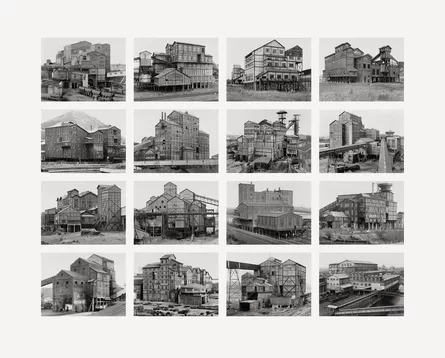What is it?
New Topographics was a term coined by William Jenkins in 1975 to describe a group of American photographers (such as Robert Adams and Lewis Baltz) whose pictures had a similar banal aesthetic, in that they were formal, mostly black and white prints of the urban landscape. Unlike their predecessors, these new “topographic” photographers (such as Robert Adams) were less concerned with portraying an ideal image of nature and were more interested in showing plainly how man has altered it
Who are they?
The New Topographics photographers were Robert Adams, Bernd and Hilla Becher, Lewis Baltz, Joe Deal, Frank Gohlke, Nicholas Nixon, John Schott, Stephen Shore, and Henry Wessel Jr.
What was the new topographics a reaction to?
Their stark, beautifully printed images of this mundane but oddly fascinating topography was both a reflection of the increasingly suburbanised world around them, and a reaction to the tyranny of idealised landscape photography that elevated the natural and the elemental.
Artist reference – Robert Adams

Robert Adams is an American photographer best known for his images of the American West. Offering solemn meditations on the landscapes of California, Colorado, and Oregon, Adams’s black-and-white photos document the changes wrought by humans upon nature. While Adams was teaching English at Colorado College, he began taking pictures of nature and architecture with a 35 mm reflex camera, and learned photographic technique from the professional photographer Myron Wood. His earliest series The New West (1968–1971) depicts the uniform housing tracts that were part of suburban development in Colorado.
New Topographic mood board

The New West

The New West is a photographic essay about what came to fill it—freeways, tract homes, low-rise business buildings and signs. In five sequences of pictures taken along the front wall of the Colorado Rocky Mountains, Robert Adams has documented a representative sampling of the whole suburban Southwest.
Frank Gohlke

Frank Gohlke was raised in Wichita Falls, Texas. He received a B.A. in English Literature from the University of Texas at Austin in 1964 and an M.A. in English Literature from Yale University in 1966. While at Yale, Gohlke met photographer Walker Evans, and in 1967 and 1968 he studied with the landscape photographer Paul Caponigro.
Between 1971 and 1987, Gohlke made his home in Minneapolis, and has resided since in Southborough, Massachusetts. He has taught photography at Middlebury College; Colorado College; Yale University; and the Massachusetts College of Art.
Gohlke is the recipient of two Guggenheim Foundation Fellowships, a Fulbright Scholar Grant, and two grants from the National Endowment for the Arts; as well as grants from the Bush Foundation, the McKnight Foundation, and the Gund Foundation. He has also received commissions from the Wichita County Heritage Society and the Texas Historical Foundation.
Gohlke′s photographs have been exhibited at the Museum of Modern Art; the Art Institute of Chicago; the Cleveland Museum of Art; the Minneapolis Institute of Arts; the Amon Carter Museum; and the Museum of Fine Arts, Houston. In 1975, he was included in the influential exhibition New Topographics: Photographs of a Man-altered Landscape, organized by the International Museum of Photography at George Eastman House. His photographs are held in the permanent collections of the Museum of Modern Art; the Metropolitan Museum of Art; the International Museum of Photography at George Eastman House; the Canadian Center for Architecture; the Art Institute of Chicago; the Amon Carter Museum; and the Walker Art Center.
